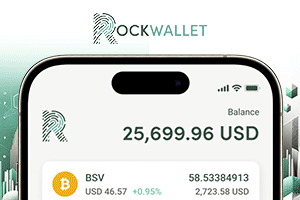|
Getting your Trinity Audio player ready...
|
Bybit, a global digital asset exchange, has introduced an 18% Goods and Services Tax (GST) on trading and transaction fees for users based in India. This new tax is in addition to the existing 30% flat income tax on digital asset gains and the 1% tax deducted at source (TDS) that applies to every digital asset transaction above Rs 10,000 ($116).
This development is particularly significant because many local traders had previously turned to overseas exchanges to sidestep the country’s high ‘crypto’ taxation. However, with platforms like Bybit now adhering to tax regulations, that loophole is quickly closing.
“In accordance with the India taxation framework, Virtual Digital Asset Service Providers will be required to charge a 18% GST (Goods and Services Tax) on service fees and trading fees to residents of India. In compliance with this requirement, Bybit will be implementing the GST charge,” Bybit said in a statement.
The GST amount will be deducted directly from the assets received. The tax will be imposed on all types of transactions, including spot and margin trades, derivatives, fiat conversions, and ‘cryptocurrency’ withdrawals, the statement added.
Bybit is also set to discontinue several services for users in India. Features like legacy crypto loans, the Bybit card, and various trading bots, such as Spot Grid, Dollar Cost Averaging (DCA), and Futures Combo, will no longer be available. From July 17, cardholders will be restricted from making new transactions, and auto-repayment will be triggered for any outstanding borrowings in user accounts.
“This is an extremely critical development. It clearly indicates that India’s tax authorities may be expanding enforcement to offshore exchanges operating in India or servicing Indian residents. This in my opinion will have major implications for Indian traders,” Raj Kapoor, founder of India Blockchain Alliance (IBA), told CoinGeek.
“The tax arbitrage advantage that led traders to international platforms is narrowing, and if other global exchanges follow suit (Binance, KuCoin, Gate.io, etc.), Indian traders will lose their last remaining tax shelters. This move aligns with India’s aggressive tax compliance drive on crypto since 2022. Given rising scrutiny and pressure on cross-border digital services (like Netflix, Google Play, AWS), crypto platforms aren’t likely to remain exempt,” Kapoor added.
Bybit stands out as one of the first global digital asset exchanges to formally declare its compliance with Indian tax regulations, specifically regarding the collection of GST from users residing in India. In contrast, many other international platforms have yet to make similar public announcements. However, with this precedent now established, industry experts believe that more exchanges will begin implementing GST charges, whether by choice or due to mounting regulatory pressure.
Kapoor informed that tax authorities are increasingly applying the Online Information Database Access and Retrieval (OIDAR) framework to bring foreign digital service providers under the GST umbrella when their services are accessed by users in India. This signals a broader push for accountability and tax compliance across the digital asset sector.
Indian digital asset exchanges have been adhering to the country’s GST regulations. These platforms either absorb the GST within the trading fees or add it transparently on top, which users can verify through their transaction history on the exchange.
In contrast, many international exchanges have yet to fully align with India’s tax framework. Industry experts point out that while some platforms have not been paying GST, others continue to bypass the mandatory 1% TDS on digital asset transactions. From a regulatory standpoint, this constitutes a clear case of tax non-compliance, a serious issue that may result in substantial penalties or legal action against these entities.
“Bybit’s move signals the inevitable: global exchanges can’t remain outside the scope of India’s evolving crypto framework forever. For years, traders bypassed tax burdens by shifting to offshore platforms. That gap is now closing. It’s no longer about evasion—it’s about adaptation,” Rohan Sharan, founder of Timechain Labs, told CoinGeek.
As enforcement tightens, domestic and international exchanges will likely be required to operate under the same regulatory standards. This means more global platforms are expected to begin charging GST to users soon.
“As India asserts more regulatory clarity, other global exchanges will either comply or risk losing access to one of the world’s largest retail crypto markets. Compliance will become a competitive advantage, not a burden,” Sharan pointed out.
“For Indian traders, this is a turning point. Yes, layered taxes squeeze margins. But the bigger concern isn’t profitability; it’s predictability. Traders and businesses can plan around known tax regimes. What kills innovation is uncertainty, not taxation,” Sharan added.
Regulators target tax gaps
Tax non-compliance is becoming an increasingly serious liability for businesses operating in the digital asset space, particularly as regulatory scrutiny intensifies. In India, authorities have stepped up enforcement efforts to ensure that all digital asset-related activities fall within the existing tax framework. Several digital asset exchanges and individual users have already been served with formal notices from Indian tax authorities over unpaid dues. These notices clearly warn that non-compliance will not be tolerated and could lead to penalties, interest charges, or even legal proceedings.
“We believe that all exchanges—domestic or international—must comply with the laws of the land. Indian investors should exercise caution while using non-compliant platforms, as it not only exposes them to regulatory risks but also to potential bad actors,” Sumit Gupta, co-founder of CoinDCX, India’s first digital currency unicorn, told CoinGeek.
“The recent notices sent by the income tax department to thousands of users for non-disclosure of virtual assets are a clear reminder of the importance of compliance,” Gupta added.What’s crucial, however, is that the financial and legal consequences of non-compliance must not be shifted onto users. If customers bear the brunt of penalties or regulatory actions due to an exchange’s oversight, it would be both unjust and deeply damaging, especially when users have followed the rules in good faith.
Already, India imposes one of the harshest taxation on digital asset trading—a 30% flat tax on all digital currency income with no provision to offset losses and a 1% TDS on all transactions above Rs 10,000 ($116). This may likely lead to a loss of about $1.2 trillion in trade volume on domestic exchanges, according to a study from Esya Centre, an Indian policy think tank.
So far, Seychelles-headquartered OKX exchange shut down its India operations, citing regulatory hurdles. Moreover, India’s digital asset exchange landscape is poised for major consolidation in 2025, with smaller platforms expected to either cease operations or merge with larger competitors. This shift is largely driven by the country’s stringent tax policies on ‘cryptocurrencies’ and other digital assets.
“If further taxes (like GST on total transaction value or increased TDS) are imposed, the immediate impact would be that profit margins will shrink dramatically. Then, crypto arbitrage, day-trading, and scalping will become unviable domestically, Indian traders may move to decentralized exchanges (DEXs) and peer-to-peer (P2P) networks without centralized oversight,” Kapoor pointed out.
“Add to that the risk of increasing underground crypto activity via virtual private networks, fake know-your-customer, and over-the-counter trades — already a known concern and yet to be satisfactorily addressed. In effect, if taxes continue to stack without formal regulation and safe investment avenues, retail activity will decline, institutions will stay away, and black-market risk will increase,” Kapoor added.
Is ‘crypto’ trading still profitable?
The big question on every Indian trader’s mind today is whether digital asset trading remains financially worthwhile given the growing stack of taxes. With multiple layers of taxation, including a 30% flat tax on profits, 1% TDS, and 18% GST on trading fees, it’s becoming increasingly difficult to determine if trading can still yield meaningful returns. The real concern is whether these burdens leave enough room for profits, especially for smaller retail investors and frequent traders.
Industry experts believe that the current tax structure is financially burdensome for the majority of active retail digital asset traders in India. Under these conditions, only a few categories of participants, such as high-frequency traders with substantial capital, long-term investors riding bull markets, or those using decentralized exchanges (DEXs) that fall outside regulatory oversight, may still find viable margins.
“Profits can still be made in spot holdings in bull runs, early-stage token investments, non-fungible tokens, decentralized finance protocols, or offshore staking (if not repatriated), but for active trading and scalping — it’s borderline loss-making now,” Kapoor explained.
“For most active retail traders, it’s rapidly becoming unprofitable…So, unless you’re a high-frequency, high-capital trader, a long-term HODLer in bull markets, or trading via unregulated DEXs, it’s going to be extremely difficult to maintain healthy net margins in India’s crypto environment today,” Kapoor noted.
The Indian digital asset trading market is evolving, and traders need to adapt and take a more mature, strategic approach to succeed. Even with the heavy tax burden, there are still ways to trade profitably. Strategies like long-term holding or carefully planned arbitrage can still work, but quick speculative trades are becoming a lot less viable.
“Despite the tax stack—30% on profits, 1% TDS, and now 18% GST—profitable strategies still exist, especially in low-frequency, long-hold portfolios or structured arbitrage. But it’s no longer a playground for speculative flips. The industry is maturing, and so must the players,” Sharan said.
Local exchanges, on their part, have been requesting the government to establish a level playing field for virtual digital assets (VDAs). The requests include reducing TDS from 1% to 0.01%, allowing offsetting and carrying forward losses, and treating income from digital assets at par with other capital assets. But the requests have so far fallen on deaf ears. While the local economy is looking to regulate the digital assets space, Finance Minister Nirmala Sitharaman said in March 2024 that ‘cryptocurrencies’ cannot be a legal currency in India.
“While India currently ranks among the highest-taxed regions for crypto, it also leads in global adoption. This tells an important story: Indians continue to believe in the long-term value and potential of digital assets. However, the current taxation framework—though well-intentioned—is inadvertently pushing users and volumes to offshore non-compliant platforms,” Gupta said. “These reforms can significantly reduce market friction, improve domestic liquidity, and curb capital flight to non-compliant platforms, while ultimately increasing tax revenue for the government. Despite the headwinds, India’s crypto ecosystem remains vibrant. A rational, forward-looking tax policy will be key to unlocking its full potential and ensuring sustainable innovation and investor participation.”
Watch: India is going to be the frontrunner in digitalization

 09-01-2025
09-01-2025 





